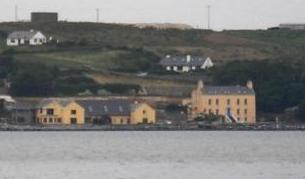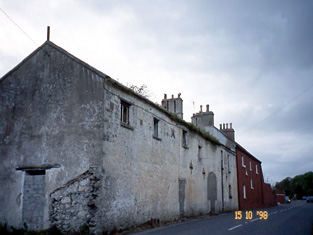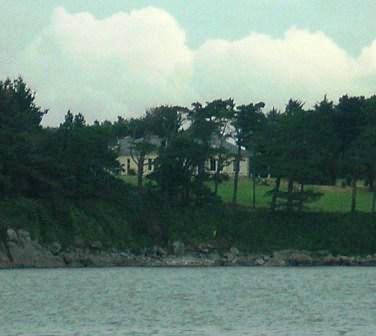Knockglass
Houses within 10km of this house
Displaying 13 houses.
Houses within 10km of Knockglass
Displaying 13 houses.
| House name | Description | |
|---|---|---|
| Bunow Mill | John Palmer was leasing a property, including a flour mill, valued at £51 from the estate of Olivia Donovan at the time of Griffith's Valuation. | |
| Garrahies | At the time of Griffith’s Valuation, this property, valued at £11, was being leased by Edward Day to Francis Fitzgerald. In 1837 Lewis records it as the seat of F. Fitzgerald. Bary states that it remained in the Fitzgerald family until the 1930s. It was still extant in the late twentieth century. | |
| Killiney | Thomas Blennerhassett was leasing this property from the Blackwood estate at the time of Griffith's Valuation, when it was valued at £4, on a holding of 660 acres. |

|
| Mount St. Annagh | St. John Mason was leasing this property to Johanna O'Connor at the time of Griffith's Valuation, when the house, valued at £3 10s, stood on 800 acres. Johanna O'Connor was one of the principal lessors in the parish of Annagh at that time. The original house is no longer extant. | |
| Barrow House | Sir Edward Denny was leasing Barrow House to John Collis at the time of Griffith's Valuation when it was valued at £20 10s. In 1837 Lewis mentions Barra [sic] as the seat of T. Collis. In the 1830s, the Ordnance Survey Name Books indicate it was the residence of John Collis, having been built about two centuries previously. Leet noted it as the seat of John Collis in 1814. Bary states that the house was built by a William Collis, a Cromwellian officer, and continued to be associated with the Collis family until latter half of the nineteenth century. In the 1990s it was a restaurant and guesthouse but has now reverted to private ownership. |

|
| Ballygarran House | Sir Edward Denny was the lessor of Ballygarran at the time of Griffith's Valuation, when the property, valued at £9 10s, was vacant. In the 1830s, the Ordnance Survey Field Name Books mention Ballygarran House as the residence of William Hilliard by whose family it had been built in the eighteenth century. It is described as " an oblong low thatched house". Bary notes that it was a house frequently associated with the Hilliard and later the Fitzmaurice families. It was demolished in the mid-twentieth century. | |
| Lassinah | John Day Stokes was leasing this property from Sir Edward Denny at the time of Griffith's Valuation, when it was valued at £20 10s. Bary states that Major Stokes retired here from his Indian Army post and renovated the house where he lived until 1862. It remained in the Stokes family until the end of the nineteenth century and was recorded by Slater as the seat of Maj. Oliver R. Stokes in 1894. It is still extant but ruined. | |
| Kent Lodge | Richard O'Connell was leasing this property from the Denny estate at the time of Griffith's Valuation, when it was valued at £10 10s. Bary states that this house was attached to an earlier building known as O'Connell's Cottage where Rickard O'Connell lived but that Kent Lodge was built by William Collis. The house, which is still extant, remained in the Collis family until the early twentieth century. |

|
| Church Hill House | At the time of Griffith's Valuation, Rev. Henry Denny was leasing Church Hill from Sir Edward Denny when it was valued at £27. According to Bary the house was in the hands of the Denny family for much of the eighteenth and nineteenth centuries until it passed to the Neligans, possibly in the 1880s. In 1906 it was owned by William Neligan and valued at £27. It is still extant and occupied. |

|
| Keel House | Edward Rae was in possession of Keel House at the time of Griffith's Valuation. Lewis records it as the seat of Giles Rae in 1837. Bary states this was originally a Langford House, possibly built as far back as the 1680s but with later modificiations. Wilson refers to it as the seat of Mr. Langford in 1786. It passed by marriage to the Rae family with whom it remained until the twentieth century. It was sold but later re-purchased by the family and is still extant. |

|
| Fenit House or Fenit Lodge | Though this house was mostly associated with the Hurley family, at the time of Griffith's Valuation, it was in the possession of a Miss Locke, when it was valued at £20. It was being leased by John Murray. In 1906 it was owned by John C. Hurley and valued at £33. Bary notes that it later came into the Fuller family through marriage. It was sold in the 1970s but is still extant and occupied. |

|
| Oyster Hall | Edward Denny was leasing this property to William J. Neligan at the time of Griffith's Valuation, when it was valued at £18 Lewis refers to it as the seat of Barry Collins while Oyster Lodge was the residence of Mr.Neligan in 1837. IIn the 1830s, the Ordnance Survey Field Name Books mention Oyster Hall as the seat of Daniel Supple but originally built by George Rowan in 1804. In 1814, Leet refers to Oyster Hall as the residence of George Rowan. Bary states that Oyster Hall was orginally built by the Rowans but was associated with the Neligans by the middle of the nineteenth century. It is no longer extant. | |
| Glenfield House | In 1906 Major P. Chute owned a property at Ballygarret, barony of Corkaguiny, valued at £35 10s. At the time of Griffith's Valuation, this townland was in the possession of Nathaniel Bland. The house does not appear on the First Edition Ordnance Survery map but is labelled Glenfield House on the later 25-inch edition of the 1890s. In 1894 Slater noted it as the seat of Captain Thomas Chute. The original house is no longer extant. |

